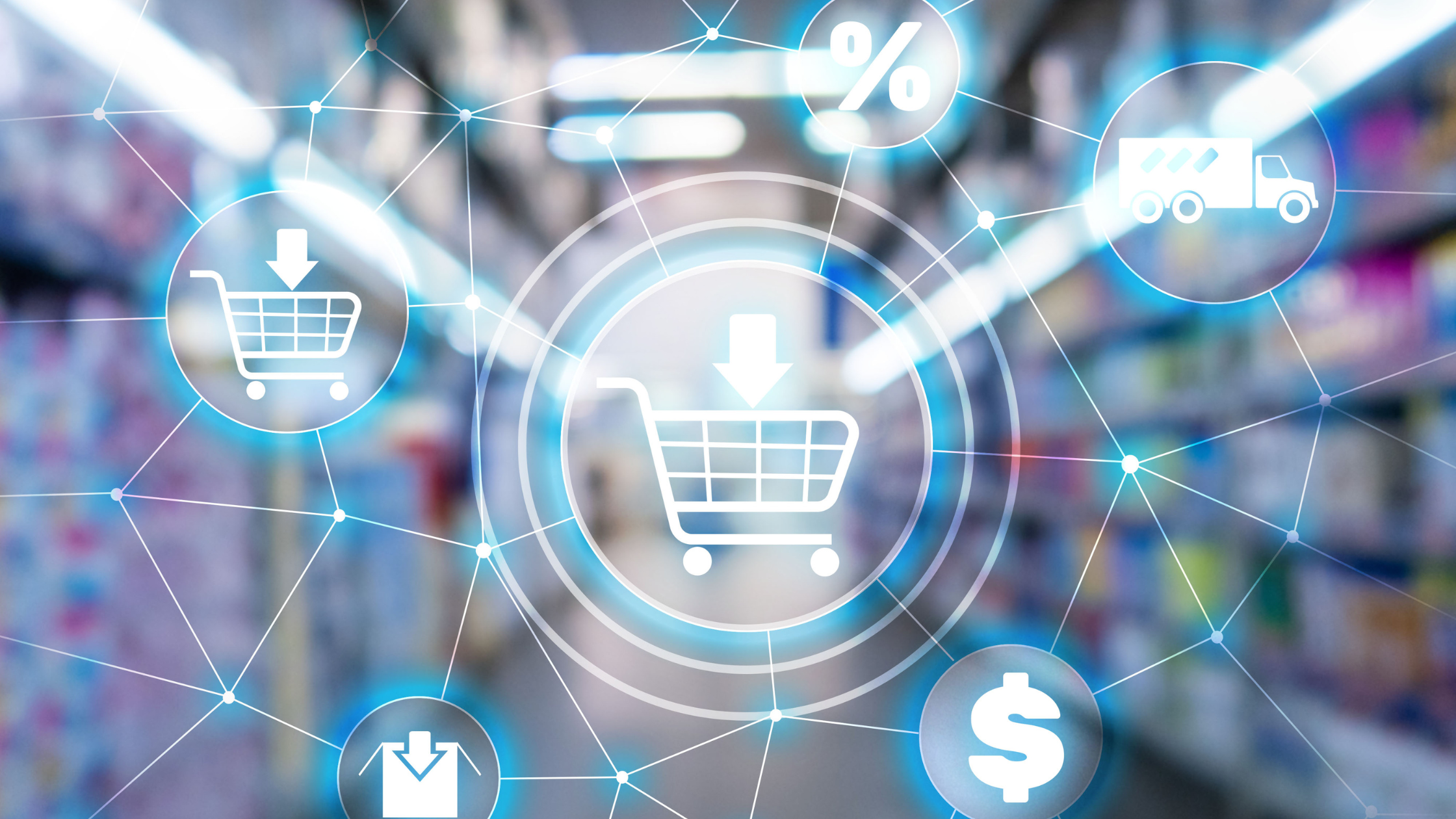The shopping trend has changed dramatically over the past decade, as more and more people are now utilizing mobile apps and other online ways to place their orders. To adapt to this shift, many businesses are understandably turning to ‘headless eCommerce.’ This approach, however, is not a one-size-fits-all solution, and the “Traditional Ecommerce vs Headless Ecommerce” debate is still raging.
Comprehending the variations between the usual method of undertaking online business and this famed headless approach is paramount. Imagine headless eCommerce like a tool that lets you personalize and customize your online store, but it needs someone good with technology to handle it.
In this article, we’ll explain what headless eCommerce represents and how it works. Plus, we’ll guide you through some things to think about so you can decide if it’s right for your business. Let’s get started!
What’s the Difference Between Traditional and Headless Ecommerce?
Every website has two sides to it. There is the front-end, which interacts with customers, and the back-end, which creates and maintains the website.
The terms “traditional” and “headless” ecommerce describe how these two aspects collaborate to produce the layout and features of an online business.
I’ll go into each option’s operation below, but to quickly see how traditional and headless e-commerce differ from one another, picture them as houses:
Conventional online shopping is analogous to purchasing a house and customizing it to your preferences.
- Traditional ecommerce is analogous to purchasing a house and then making alterations to fit your preferences.
- Headless ecommerce is analogous to planning and building a house with every aspect exactly how you want it.
Headless Ecommerce |
Traditional Ecommerce |
| Decoupled front-end allows greater flexibility in customizing user experience across devices and channels | Front-end tied to back-end limits customization capability |
| API-driven integration allows swapping front-end frameworks without affecting back-end code | Front-end and back-end coupled together makes swapping frameworks challenging |
| Enables innovation and iteration of customer-facing features faster without backend constraints | Changes to customer experience require back-end work |
| Microservices architecture enables scaling specific site services up/down independently | Monolithic architecture requires scaling everything together |
| Supports robust personalization of content/offers using external CMS | Often less flexibility for detailed personalization |
| Omnichannel consistency in experience from supporting multiple front-ends to web, mobile, IoT | Single front-end makes omnichannel challenging |
| Headless is cloud-native for accessibility; easier global deployment | Traditional sites often run on legacy infrastructure |
| Requires more initial integration work between systems | Slightly simpler initial setup as all-in-one system |
| Higher control over best-of-breed combinations of specialized CMS, commerce, etc. | Stuck with solution limitations even if one area is weak |
| Ongoing flexibility to evaluate new innovations and shift pieces | Generally locked into a single vendor solution |
| Example: Contentful, Strapi, Shopify Plus, BigCommerce | Example: Magento, WooCommerce, Shopify (non-Plus) |
What is Traditional ecommerce?
In traditional e-commerce software, the programming logic for both the front and back ends of the website is interconnected. Modifications made to one aspect can have unforeseen consequences on the other.
For instance, adjusting a design element on the digital storefront may inadvertently disrupt a back-end function, such as payment processing.
To mitigate these challenges, traditional e-commerce platforms establish pre-defined front-end solutions that effectively integrate with the back-end.
While this approach limits customization, it ensures a site’s smooth operation. Additionally, it allows for minor adjustments, like altering font size or background colors, without needing coding skills or a developer’s assistance.
Furthermore, traditional e-commerce, which refers to online retail that involves buying and selling goods and services over the Internet, has advantages and disadvantages. Here are some of the pros and cons:
Pros of traditional ecommerce
User-Friendly Storefront Creation:
Traditional ecommerce platforms prioritize simplicity in setting up an online store. The absence of the need for in-house developers or advanced coding skills makes it accessible to a broader audience, especially small businesses with limited resources.
The drag-and-drop interface simplifies the process, allowing users to design and organize their digital storefront without technical expertise.
Quick Store Launch:
The use of prebuilt templates streamlines the front-end design process, enabling businesses to launch their ecommerce sites swiftly. These templates come with predefined structures and styles, reducing the time and effort required for design decisions.
By adding specific details like product images and brand colors, businesses can have a functional online store within a short timeframe, which is advantageous for those who want to establish an online presence rapidly.
No Need for Web Design Expertise:
Storefront themes on traditional ecommerce platforms adhere to established web design principles. It means businesses can explore the intricacies of web design without diving into its complexities.
The plug-and-play nature of these storefronts ensures a consistent and familiar online shopping experience for customers.
This static design approach maintains user-friendly navigation without necessitating a deep understanding of design nuances.
Scalability Solutions for Growing Businesses:
Traditional ecommerce solutions are designed to grow with the business. As a company expands, these platforms can effortlessly handle an increasing volume of products, transactions, and website visitors.
This scalability is crucial for businesses that anticipate growth, ensuring that the online store remains efficient and effective even as the demands on the platform increase.
Customization Options for Unique Branding:
While emphasizing user-friendliness, traditional ecommerce platforms provide customization options to maintain a unique brand identity.
Businesses can tailor their online store’s appearance, features, and functionality to reflect their specific branding and user experience preferences.
This balance between ease of use and customization allows businesses to create a distinct online presence that aligns with their brand and resonates with their target audience.
Cons of traditional ecommerce
Limited and Costly Customization:
Implementing customization in a traditional ecommerce site can be both limited and expensive.
Introducing changes beyond template capabilities necessitates hiring professionals and may result in unexpectedly high costs.
While the initial ease of setup is beneficial, businesses may need more flexibility to tailor their sites to specific needs.
Lack of Rich User Experience:
Traditional ecommerce needs to provide a rich user experience, including content personalization.
The inability to accommodate innovative features puts your brand at a disadvantage against competitors offering a more dynamic experience.
The static nature of traditional ecommerce limits the ability to engage customers with personalized content, potentially hindering brand loyalty and customer connection.
Challenges in Adopting New Software Integrations:
Difficulty in smooth integrating new software due to the rigid structure of traditional ecommerce.
Developers may need to devise complex workarounds, incurring additional expenses for your business.
The slow adoption of new software integrations may hinder the business’s ability to stay technologically competitive in a rapidly evolving digital landscape.
Device Compatibility Issues:
The inflexibility of traditional ecommerce makes optimizing the site for various devices challenging.
Customers may encounter issues such as distorted page displays, missing buttons, and truncated menus, potentially leading to site abandonment.
Refunding user experiences across different devices can result in lost opportunities and improved customer satisfaction.
What is Headless Ecommerce?
Headless e-commerce offers extensive customization possibilities by separating the front and back end of the website. It was developed to meet the increasing demands of customers for an exceptional experience, particularly one that offers personalized content.
Modifications to the site code are communicated through an application programming interface (API) rather than affecting the front-end. It enables developers to concentrate on front-end adjustments without the concern of disrupting the overall logic and functionality of the website.
Unlike traditional e-commerce, headless e-commerce does not employ templated storefronts. Instead, the site pages are constructed from the ground up. Although this approach may be more time-consuming, developers can craft a digital storefront that precisely aligns with their desired appearance and functionality.
There is no clear winner when it comes to the perfect e-commerce system. Your company’s needs and the resources available to you will determine which option is best.
Pros of Headless Ecommerce
Embracing Emerging Technologies:
The flexibility inherent in a headless e-commerce solution empowers businesses to integrate and adopt the latest technologies smoothly.
This adaptability is particularly advantageous given the frequent advancements in software, allowing your online store to stay at the forefront of innovation.
Abundant Customization Options:
With no pre-defined front-end experience, the headless approach offers unparalleled freedom in tailoring the user interface to meet the specific needs of your business.
Whether you desire the addition of a countdown timer to enhance the urgency of customer shopping carts or the effortless translation of your site into multiple languages, the customization possibilities are virtually limitless, limited only by your creativity.
Enhanced Customer Experience:
Constructing the front-end from scratch provides the potential to craft a customer experience that not only meets but exceeds expectations.
Leveraging the headless architecture allows for dynamic features such as personalized product recommendations based on purchase history, site customization based on a visitor’s geographical location, and smooth transitions between computer and mobile shopping, all contributing to a delightful customer journey.
Easy Site Modifications:
Once the initial framework is established, managing and updating the site becomes streamlined through a content management system (CMS).
The intuitive interface of a CMS allows for quick and hassle-free updates to the site’s design or functionality, requiring minimal coding expertise in most cases.
Faster Loading Times:
Headless e-commerce often results in faster loading times for web pages. Since the front-end is decoupled from the back-end, the content can be delivered more efficiently.
This is especially crucial for user experience and SEO, as faster-loading pages contribute to lower bounce rates, higher user engagement, and improved search engine rankings.
The speed advantage is particularly noticeable in scenarios where content delivery networks (CDNs) are employed to distribute assets globally.
Integration with Third-Party Services:
The headless approach facilitates smooth integration with third-party services and APIs. This integration capability allows you to connect your e-commerce platform with various tools and services, such as payment gateways, marketing automation systems, analytics platforms, and more.
This flexibility enables you to choose best-of-breed solutions for different aspects of your business, optimizing functionality and creating a tailored ecosystem that meets your specific requirements.
Device Compatibility:
A standout feature of headless ecommerce is its compatibility with various devices.
Whether your customers are using a laptop, smartphone, or any other device, the headless architecture ensures a consistent and smooth browsing experience without concerns such as buttons disappearing or features not displaying correctly.
Future-Proofing Your E-commerce:
By adopting a headless architecture, your e-commerce platform becomes more future-proof. As technology evolves, new devices and channels emerge, and customer expectations change, a headless approach allows you to adapt quickly.
You can integrate emerging technologies, adopt new communication channels, and evolve your online store without the need for a complete overhaul.
This future-proofing ensures that your e-commerce business remains competitive and relevant in the ever-changing digital landscape.
Cons of Headless Ecommerce
High Initial Costs for Small Businesses:
The transition to a headless ecommerce solution demands a significant upfront investment, making it potentially prohibitive for small businesses.
Unlike traditional prebuilt solutions, the bespoke nature of headless platforms requires skilled development from the ground up, incurring higher initial costs.
Longer Launch Time:
Unlike the plug-and-play nature of traditional ecommerce solutions, the headless approach necessitates a more extended timeline for planning and implementation.
The intricacies of the headless architecture, coupled with the need for meticulous customization, contribute to a longer time frame before your ecommerce store is ready for launch.
Dependence on Developers:
While your in-house team can handle subsequent updates and day-to-day management through a custom CMS, the initial construction of a headless ecommerce site often requires the expertise of skilled developers.
The complexity of setting up the infrastructure and ensuring smooth functionality makes professional developer involvement advisable during the initial stages.
Conclusion
In the evolving world of ecommerce websites, traditional and headless ecommerce solutions are two popular approaches, with their own sets of strenghts and weaknesses. It’s important to note, however, that there is no silver bullet to solve all problems, and the final choice depends on a number of factors, such as the budget allocated to the project, the overall scope of your project, and the preference of the target audience. Therefore, you must perform a comprehensive analysis before making the final decision.
Why Choose a Canadian Software Agency for your next ecommerce project?
At Canadian Software Agency, we have a team of WordPress developers with years of experience in this field. We have delivered tens of projects to our clients for over a decade. If you are interested in our services, contact us now.






